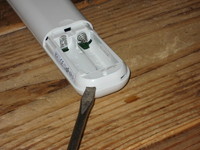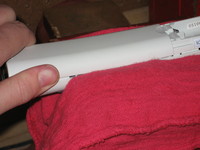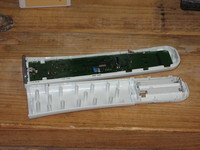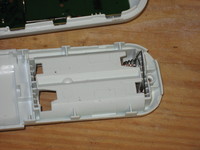Graphite has changed much in the last year, though you wouldn’t know it from reading the official site. Much work has gone in to the new metric writer, Ceres, to improve on the already fantastic Whisper backend which has been the default in the past. Ceres allocates space as metrics are recorded, so your storage needs will scale more directly with use than with Whisper. Additionally, the various carbon daemons (carbon-cache, carbon-relay, etc.) have all been merged into a single daemon called “Megacarbon”. This new daemon supports all the same functionality but streamlines the configuration process. These instructions are for Ubuntu Server 13.04, but you can probably adapt them to your distro of choice if you have sufficient experience.
To start with, you’ll need to get some tools and libraries to help you configure everything. These will need to be installed system-wide:
sudo aptitude install git python-pip python-dev libcairo2 libffi-dev memcached uwsgi nginx uwsgi-plugin-python uwsgi-plugin-carbon
sudo pip install -U pip # Get the latest pip
sudo pip install -U virtualenvwrapper # Get the latest virtualenvwrapper
Now that you’ve got the requirements installed, you’ll need to create a user for graphite:
sudo adduser graphite
You’ll be prompted for details about the user, enter anything you wish. I recommend a 64 or more character password, and that you do not bother to record it. With sudo access to the box, you will not need it. The next step is creating the graphite storage location. I prefer /opt/graphite for this:
sudo mkdir /opt/graphite
sudo chown -R graphite.graphite /opt/graphite
sudo chmod 751 /opt/graphite # More on this later
Now switch to your graphite user and configure virtualenv wrapper:
sudo su - graphite
source /usr/local/bin/virtualenvwrapper.sh
echo "source /usr/local/bin/virtualenvwrapper.sh" >> .bashrc
Once virtualenvwrapper is configured, you can create the new virtualenv and start installing graphite:
mkvirtualenv -a /opt/graphite graphite # This should change your directory to /opt/graphite
We need a directory for our sources:
mkdir src
cd src/
From the src folder, we can start installing graphite components:
export GRAPHITE_ROOT=/opt/graphite
git clone git://github.com/graphite-project/carbon.git -b megacarbon
cd carbon/
pip install -r requirements.txt
python setup.py install
cd $GRAPHITE_ROOT/src/
git clone git://github.com/graphite-project/ceres.git
cd ceres/
pip install -r requirements.txt
python setup.py install
Next, configure Ceres’ datastore:
ceres-tree-create /opt/graphite/storage/ceres
Now we need to edit config files. Start by copying the example configs:
cd $GRAPHITE_ROOT/conf/carbon-daemons/
cp -r example/ writer
cd writer/
The three files that you should confirm are configured as you desire are daemon.conf, writer.conf, and db.conf. It’s a good idea to read the others as well. The parts you must change are:
in daemon.conf:
USER = graphite
in db.conf:
DATABASE = ceres
LOCAL_DATA_DIR = /opt/graphite/storage/ceres/
The other options can remain the same should you so desire. Now we install the web app:
cd $GRAPHITE_ROOT/src/
git clone git://github.com/graphite-project/graphite-web.git
cd graphite-web/
Unfortunately, I wasn’t able to get pycairo to install properly inside a virtualenv, so I used a drop-in replacement library called cairocffi which works flawlessly as far as I can tell. Remove pycairo from the requirements, and install the remainder along with cairocffi:
sed -i '/cairo/d' requirements.txt
pip install -r requirements.txt
pip install cairocffi
Next, we have a small hack to ensure cairocffi gets used instead of pycairo:
echo 'from cairocffi import *' > /home/graphite/.virtualenvs/graphite/lib/python2.7/site-packages/cairo.py
Finally, install graphite-web:
python setup.py install
Now you need an entry point for your application:
cd $GRAPHITE_ROOT/webapp/
Now create wsgi.py in this folder and populate it with the following text:
import os, sys
os.environ['DJANGO_SETTINGS_MODULE'] = 'graphite.settings'
import django.core.handlers.wsgi
app = django.core.handlers.wsgi.WSGIHandler()
This file will be the module imported by uwsgi to run your app. You should take the opportunity now to configure your database. You can create a superuser now as well, who will be the user you log into the application as:
cd $GRAPHITE_ROOT/webapp/graphite/
python manage.py syncdb
We’re nearly there. Now we get everything starting on boot and configure nginx/uwsgi:
exit # So we're not running as the graphite user
Create and edit /etc/init/carbon-writer.conf and place the following inside (change eth0 to your adapter name from ifconfig):
description "carbon writer"
start on (net-device-up IFACE=eth0 and local-filesystems)
stop on runlevel [016]
expect daemon
respawn limit 5 10
env GRAPHITE_DIR=/opt/graphite
exec start-stop-daemon --oknodo --pidfile /var/run/carbon-writer.pid --startas $GRAPHITE_DIR/bin/carbon-daemon.py --start writer start
Now start the carbon daemon and ensure it’s listening:
sudo start carbon-writer
sudo netstat -plan | grep :2003
You should see a process listening on port 2003. Once that’s up, you can configure the webserver. Create and edit /etc/nginx/sites-available/graphite and enter the following:
server {
listen 80;
keepalive_timeout 60;
server_name graphite.example.com;
charset utf-8;
location / {
include uwsgi_params;
uwsgi_param UWSGI_CHDIR /opt/graphite/webapp/;
uwsgi_param UWSGI_PYHOME /home/graphite/.virtualenvs/graphite/;
uwsgi_param UWSGI_MODULE wsgi;
uwsgi_param UWSGI_CALLABLE app;
uwsgi_pass 127.0.0.1:3031;
}
location /content/ {
alias /opt/graphite/webapp/content/;
autoindex off;
}
}
Naturally you should substitute example.com for your actual domain. Now we ensure nginx can read the content directory (this is why we set /opt/graphite to permission 751 earlier):
sudo chown -R graphite.www-data /opt/graphite/webapp/content
sudo chmod 751 /opt/graphite/webapp /opt/graphite/webapp/content
Now we create a configuration file for uwsgi. Create and edit /etc/uwsgi/apps-available/graphite.ini and enter the following:
[uwsgi]
plugins = python
gid = graphite
uid = graphite
vhost = true
logdate
socket = 127.0.0.1:3031
master = true
processes = 4
harakiri = 20
limit-as = 256
wsgi-file = /opt/graphite/webapp/wsgi.py
virtualenv = /home/graphite/.virtualenvs/graphite
chdir = /opt/graphite
memory-report
no-orphans
carbon = 127.0.0.1:2003
Note the carbon directive, which tells uwsgi to graph some metrics about accesses, memory, etc. This will be our test data to ensure everything works.
By default in Ubuntu, uwsgi will run as the www-data user and cannot change privileges to the graphite user. To work around this, we can modify the default configuration at /usr/share/uwsgi/conf/default.ini and remove the uid and gid lines. This will allow the graphite.ini file we just created to drop privileges to the graphite user. As an important security consideration here, you should ensure that all of your individual uwsgi configs specify a uid/gid if you do this. Never run exposed daemons as root!
We can now enable the application and load the configurations:
sudo ln -s /etc/nginx/sites-{available,enabled}/graphite
sudo ln -s /etc/uwsgi/apps-{available,enabled}/graphite.ini
sudo service nginx restart
sudo service uwsgi restart
If everything went well, you should now be able to reach your site at the url you configured. When you expand the Graphite group you should see a uwsgi group available that contains metrics about the running instance of uwsgi (graphite itself).
Update July 1st, 2013:
Currently, the ceres maintenance plugins are not included when installing, so it’s not possible to keep your ceres databases cleaned properly (see this issue). For now, you need to do the following as the graphite user:
cd $GRAPHITE_ROOT/
cp -rfp src/carbon/plugins/maintenance plugins/maintenance
Then, edit your crontab (crontab -e) and add this line:
7 1 * * * /opt/graphite/bin/ceres-maintenance --configdir=/opt/graphite/conf/carbon-daemons/writer/ rollup
Update 2: March 17th, 2015
Much has changed since I wrote this blog post. Please see akuzmin’s comments below for things he had to do differently from the above instructions. Thank you, akuzmin!


















